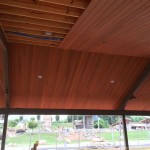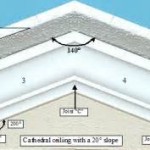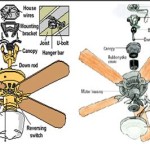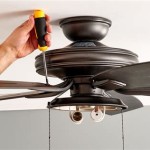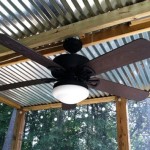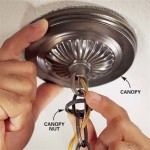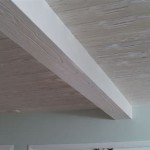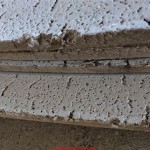How To Remove Water Spots From Popcorn Ceiling
Popcorn ceilings, also known as acoustic ceilings, were a popular choice in residential construction for several decades due to their sound-dampening and texturing properties. However, they are also notoriously porous and susceptible to water damage, which can manifest as unsightly stains. Addressing these water spots promptly and effectively is crucial to prevent further degradation and maintain the aesthetic appeal of the ceiling. This article provides a comprehensive guide on how to remove water spots from popcorn ceilings, covering preparation, cleaning methods, and preventive measures.
Before embarking on any cleaning endeavor, it is imperative to understand the potential health hazards associated with older popcorn ceilings. Many installations prior to the late 1970s contained asbestos, a known carcinogen. Disturbing asbestos-containing materials can release fibers into the air, posing a serious health risk. If there is any suspicion that the popcorn ceiling contains asbestos, professional testing is strongly recommended. If asbestos is confirmed, remediation should only be performed by a certified asbestos abatement contractor. Assuming the ceiling is asbestos-free, or after professional remediation, the following steps can be followed to address the water spots.
The first step in removing water spots from a popcorn ceiling is to assess the severity of the damage and the underlying cause of the leak. A minor, superficial stain may be addressed with simple cleaning techniques, while a larger, more pronounced stain could indicate a more significant leak within the roof or plumbing system that requires professional attention. Ignoring the underlying cause will inevitably lead to the recurrence of the water spot, rendering any cleaning efforts futile.
Once the source of the leak has been identified and rectified, it is time to gather the necessary materials and tools. These typically include:
- A step ladder or platform to safely reach the ceiling.
- Protective eyewear and a dust mask to prevent inhalation of debris.
- Drop cloths or plastic sheeting to protect flooring and furniture.
- A soft-bristled brush or sponge.
- A spray bottle filled with a mild cleaning solution (e.g., diluted dish soap or a solution of water and white vinegar).
- A dry cloth or sponge for blotting.
- Popcorn ceiling patch compound (if repair is necessary).
- A small spatula or putty knife (for applying patch compound).
- Optional: Paint that matches the existing ceiling color.
Thorough preparation is essential to minimizing mess and ensuring the safety of the work environment. Begin by covering the floor and any furniture in the room with drop cloths or plastic sheeting. Secure the protection in place with painter's tape to prevent slippage. Wearing protective eyewear and a dust mask is crucial to safeguarding against falling debris and potential irritants. Finally, ensure adequate ventilation in the work area by opening windows or using a fan. These preliminary steps contribute significantly to a smoother and safer cleaning process.
Key Point 1: Gentle Cleaning Techniques for Light Stains
For light water stains that have not deeply penetrated the popcorn texture, a gentle cleaning approach is often sufficient. The key is to avoid excessive scrubbing, which can damage the delicate texture of the ceiling. Start by lightly dampening a soft-bristled brush or sponge with the mild cleaning solution. Gently dab the stained area, working from the outer edges towards the center. Avoid applying excessive pressure or saturating the ceiling with water.
After dabbing the stained area, immediately blot the excess moisture with a clean, dry cloth or sponge. This helps to prevent the water from soaking further into the popcorn texture and potentially causing further damage. Repeat the dabbing and blotting process several times, checking frequently to assess the progress. If the stain persists, try increasing the concentration of the cleaning solution slightly, but always err on the side of caution to avoid over-wetting the ceiling.
Patience is crucial during this process. Allow the cleaned area to air dry completely before assessing the final results. The drying time will vary depending on the humidity and temperature of the room. Once the area is dry, inspect it carefully for any remaining stains. If the light stain is still visible, repeat the gentle cleaning and blotting process one more time. In many cases, this gentle approach will effectively remove the water spot without requiring more aggressive treatments.
Key Point 2: Addressing Stubborn or Deep-Set Stains
When dealing with stubborn or deep-set water stains, a more targeted approach may be required. However, it is still vital to proceed with caution to avoid damaging the popcorn texture. One effective technique is to use a paste made from baking soda and water. Mix baking soda with enough water to create a thick paste. Apply the paste to the stained area, ensuring that it completely covers the stain. Allow the paste to sit for several hours, or even overnight, to allow it to absorb the stain.
After the paste has had sufficient time to work, gently scrape it away with a plastic spatula or the edge of a credit card. Avoid using metal tools, as they can damage the popcorn texture. Once the majority of the paste has been removed, dampen a clean sponge with water and gently wipe away any remaining residue. Blot the area dry with a clean cloth and allow it to air dry completely.
For particularly stubborn stains, a solution of diluted bleach may be considered. However, caution must be exercised when using bleach, as it can discolor the ceiling and release harmful fumes. Always wear protective gloves and eyewear when working with bleach. Dilute the bleach with water according to the manufacturer's instructions, typically a ratio of 1 part bleach to 10 parts water. Apply the diluted bleach solution to the stained area with a sponge, being careful to avoid saturating the ceiling. Allow the solution to sit for a few minutes, then blot it dry with a clean cloth. Monitor the area closely for any signs of discoloration. If discoloration occurs, immediately rinse the area with clean water and blot it dry.
Sometimes, the water stain will have caused the popcorn texture to become loose or fall off. In such cases, the affected area will need to be repaired using popcorn ceiling patch compound. This compound is specifically designed to match the texture of existing popcorn ceilings. Apply the patch compound to the damaged area using a small spatula or putty knife, ensuring that it blends seamlessly with the surrounding texture. Allow the patch compound to dry completely according to the manufacturer's instructions. Once the patch is dry, it may be necessary to paint it to match the existing ceiling color. Use a small brush or sponge to apply the paint, feathering the edges to blend seamlessly with the surrounding area.
Key Point 3: Prevention and Long-Term Maintenance
Preventing water spots from forming in the first place is the most effective way to maintain the integrity and appearance of a popcorn ceiling. Regular inspection of the roof, plumbing system, and surrounding areas is crucial. Address any leaks or potential sources of water damage promptly to prevent them from escalating. Ensure proper ventilation in bathrooms and kitchens to minimize moisture buildup, which can contribute to the formation of water spots.
Consider applying a sealant specifically designed for popcorn ceilings. These sealants create a protective barrier that helps to repel water and prevent stains from penetrating the texture. Before applying a sealant, ensure that the ceiling is clean and dry. Follow the manufacturer's instructions carefully when applying the sealant. Regular cleaning of the popcorn ceiling can also help to prevent the buildup of dust and dirt, which can exacerbate the appearance of water spots. Use a vacuum cleaner with a soft brush attachment to gently remove dust and debris from the ceiling on a regular basis.
In cases where the water damage is extensive or the ceiling is significantly deteriorated, it may be necessary to consider more extensive repairs or even replacement of the popcorn ceiling. Removing a popcorn ceiling is a messy and potentially hazardous process, especially if it contains asbestos. It is often best to consult with a professional contractor to assess the extent of the damage and determine the best course of action. While removing a popcorn ceiling can be a significant undertaking, it can also provide an opportunity to update the look of the room and improve its overall value.
Careful attention to detail and a proactive approach to maintenance are key to preserving the aesthetic appeal and structural integrity of a popcorn ceiling. By understanding the proper techniques for removing water spots and implementing preventive measures, homeowners can ensure that their acoustic ceilings remain in good condition for years to come.

Popcorn Ceiling How To Remove An Ugly Stain Drywall Repairman Water Damage Repair

What Should I Do About Water Stains On A Popcorn Williams Painting

We Have An Old Water Stain On Our Ceiling How Do I Cover It Hometalk

Super Easy Way To Remove Water Stains From Ceilings Without Paint 1 Step Abbotts At Home

How To Fix Water Damage On Popcorn Ceilings

How To Fix Water Damage On Popcorn Ceilings

How To Repair A Water Damaged Popcorn Ceiling

Super Easy Way To Remove Water Stains From Ceilings Without Paint 1 Step Abbotts At Home

How To Fix Ceiling Water Stains Kilz Stain Blocker

How To Clean Popcorn Ceiling Molly Maid
Related Posts

